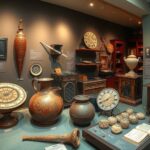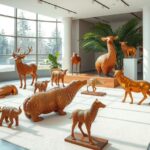Victor Hugo, celebrated for his literary works, is also an accomplished illustrator. The “Astonishing Things: The Drawings of Victor Hugo” exhibition in London features around 70 of his drawings, showcasing his artistic journey and connection with his writings. The exhibition runs until 29 June.
Victor Hugo, renowned for works like “The Hunchback of Notre-Dame” and “Les Miserables”, also had a lesser-known talent for illustration. A new exhibition, “Astonishing Things: The Drawings of Victor Hugo”, opened at the Royal Academy of Arts in London, highlighting Hugo’s passion for drawing, 140 years after his death.
The exhibition showcases Hugo’s artwork, noting that while he was a well-known public figure in 19th century France, he found refuge in drawing. His “ink and wash visions” of castles, monsters, and seascapes are described as poetic. Hugo’s work influenced several movements, including Romanticism and Surrealism, with Vincent van Gogh referring to them as “astonishing things.”
Hugo typically shared his illustrations only with close friends but ensured their preservation by donating them to France’s national library. Many pieces, created using ink washes, graphite, and charcoal, have not been publicly displayed often, with the last UK exhibition occurring over 50 years ago.
The exhibition features around 70 drawings from Hugo’s time in exile on Guernsey between 1850 and 1870, during which he created significant literary works. It traces Hugo’s artistic evolution, from caricatures to dramatic landscapes and experimental abstraction. While his writings examined social issues, some drawings, like the enigmatic “Mushroom”, diverge into fantastical themes. Political beliefs resonate in pieces like “Ecce Lex”, portraying a hanged man.
This intriguing exhibition runs until 29 June, offering insights into the relationship between Hugo’s literary and artistic endeavours.
Victor Hugo’s lesser-known talent as an illustrator is now highlighted in the London exhibition, showcasing about 70 of his drawings. These works, spanning from 1850-1870 during his exile, reveal his artistic evolution. The exhibition allows viewers to appreciate how his political beliefs and literary passions intertwined in both his writing and art.
Original Source: www.sanfordherald.com







